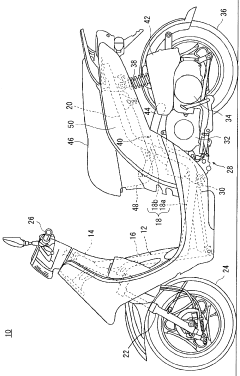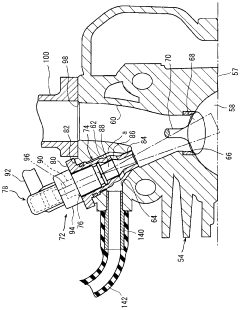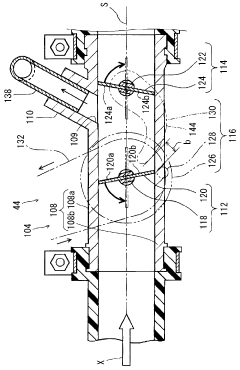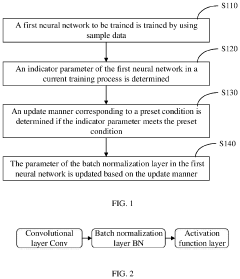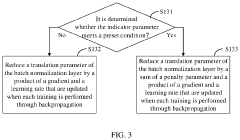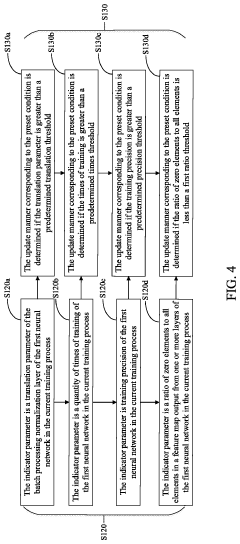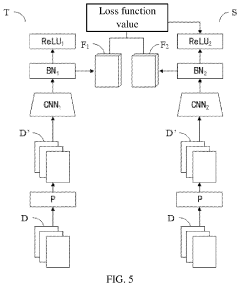How Throttle Body Design Affects Neural Network Training
JUL 18, 20259 MIN READ
Generate Your Research Report Instantly with AI Agent
Patsnap Eureka helps you evaluate technical feasibility & market potential.
Throttle Body Design Evolution and Objectives
The evolution of throttle body design has been closely intertwined with the advancement of automotive technology and the increasing demand for improved engine performance and efficiency. Initially, throttle bodies were simple mechanical devices, consisting of a butterfly valve controlled by a cable connected to the accelerator pedal. As automotive technology progressed, the design of throttle bodies underwent significant changes to meet the growing demands for precise fuel management and emissions control.
In the 1980s, the introduction of electronic fuel injection systems marked a pivotal moment in throttle body design. This shift led to the development of electronic throttle control (ETC) systems, also known as drive-by-wire technology. ETC systems replaced the mechanical linkage between the accelerator pedal and the throttle body with electronic sensors and actuators, allowing for more precise control of the throttle opening.
The primary objectives driving throttle body design evolution have been to enhance engine performance, improve fuel efficiency, reduce emissions, and optimize drivability. These goals have led to the integration of advanced sensors and control systems within modern throttle bodies. For instance, the incorporation of throttle position sensors (TPS) and idle air control valves (IACV) has enabled more accurate monitoring and adjustment of airflow into the engine.
Recent advancements in throttle body design have focused on improving the response time and accuracy of throttle control. This has involved the development of more sophisticated actuators and the use of advanced materials to reduce weight and improve durability. Additionally, the integration of throttle bodies with other engine management systems has become increasingly important, allowing for better coordination with variable valve timing, turbocharging, and direct fuel injection technologies.
The advent of neural network training in automotive applications has introduced a new dimension to throttle body design objectives. Engineers now aim to create throttle bodies that can generate rich, high-quality data for training neural networks. This data is crucial for developing more intelligent engine management systems capable of optimizing performance across a wide range of operating conditions. The design of throttle bodies is evolving to include features that facilitate the collection of precise, real-time data on airflow characteristics, throttle position, and engine response.
Looking forward, the objectives of throttle body design are likely to expand further. As vehicles become more connected and autonomous, throttle bodies may need to be designed with capabilities for remote diagnostics, over-the-air updates, and integration with advanced driver assistance systems. The ongoing electrification of vehicles also presents new challenges and opportunities for throttle body design, particularly in hybrid powertrains where seamless integration between combustion and electric propulsion systems is critical.
In the 1980s, the introduction of electronic fuel injection systems marked a pivotal moment in throttle body design. This shift led to the development of electronic throttle control (ETC) systems, also known as drive-by-wire technology. ETC systems replaced the mechanical linkage between the accelerator pedal and the throttle body with electronic sensors and actuators, allowing for more precise control of the throttle opening.
The primary objectives driving throttle body design evolution have been to enhance engine performance, improve fuel efficiency, reduce emissions, and optimize drivability. These goals have led to the integration of advanced sensors and control systems within modern throttle bodies. For instance, the incorporation of throttle position sensors (TPS) and idle air control valves (IACV) has enabled more accurate monitoring and adjustment of airflow into the engine.
Recent advancements in throttle body design have focused on improving the response time and accuracy of throttle control. This has involved the development of more sophisticated actuators and the use of advanced materials to reduce weight and improve durability. Additionally, the integration of throttle bodies with other engine management systems has become increasingly important, allowing for better coordination with variable valve timing, turbocharging, and direct fuel injection technologies.
The advent of neural network training in automotive applications has introduced a new dimension to throttle body design objectives. Engineers now aim to create throttle bodies that can generate rich, high-quality data for training neural networks. This data is crucial for developing more intelligent engine management systems capable of optimizing performance across a wide range of operating conditions. The design of throttle bodies is evolving to include features that facilitate the collection of precise, real-time data on airflow characteristics, throttle position, and engine response.
Looking forward, the objectives of throttle body design are likely to expand further. As vehicles become more connected and autonomous, throttle bodies may need to be designed with capabilities for remote diagnostics, over-the-air updates, and integration with advanced driver assistance systems. The ongoing electrification of vehicles also presents new challenges and opportunities for throttle body design, particularly in hybrid powertrains where seamless integration between combustion and electric propulsion systems is critical.
Market Demand for AI-Enhanced Engine Control
The market demand for AI-enhanced engine control systems has been steadily growing in recent years, driven by the automotive industry's push towards more efficient, intelligent, and environmentally friendly vehicles. This trend is particularly evident in the development of advanced throttle body designs that integrate neural network capabilities for optimized engine performance.
As vehicle manufacturers strive to meet increasingly stringent emissions regulations and fuel efficiency standards, the need for sophisticated engine control systems has become paramount. AI-enhanced throttle bodies offer a promising solution by enabling real-time adjustments to engine performance based on various factors such as driving conditions, environmental parameters, and driver behavior.
The global market for intelligent engine control systems is expected to experience significant growth over the next decade. This expansion is fueled by the increasing adoption of electric and hybrid vehicles, as well as the ongoing refinement of internal combustion engines. Automotive OEMs and tier-one suppliers are investing heavily in research and development to create more responsive and adaptive throttle body designs that can leverage the power of neural networks.
One of the key drivers of market demand is the potential for AI-enhanced throttle bodies to improve fuel efficiency and reduce emissions. By continuously optimizing air-fuel mixture and engine timing, these systems can significantly enhance overall engine performance. This capability is particularly attractive to fleet operators and environmentally conscious consumers who are looking to reduce their carbon footprint and operational costs.
Another factor contributing to the growing demand is the integration of AI-enhanced engine control systems with other advanced driver assistance systems (ADAS) and autonomous driving technologies. As vehicles become more connected and autonomous, the ability to precisely control engine performance based on a wide range of inputs becomes increasingly important for ensuring smooth and safe operation.
The aftermarket sector also presents a substantial opportunity for AI-enhanced throttle body systems. Performance enthusiasts and tuning shops are showing interest in retrofitting existing vehicles with more intelligent engine control solutions, creating a secondary market for these technologies.
However, the market is not without its challenges. The complexity of integrating neural network training with physical throttle body design requires significant expertise and resources. Additionally, concerns about data privacy and cybersecurity in connected vehicles may pose potential barriers to widespread adoption. Despite these challenges, the overall trajectory of the market remains positive, with industry analysts projecting continued growth in the demand for AI-enhanced engine control systems across various vehicle segments and markets worldwide.
As vehicle manufacturers strive to meet increasingly stringent emissions regulations and fuel efficiency standards, the need for sophisticated engine control systems has become paramount. AI-enhanced throttle bodies offer a promising solution by enabling real-time adjustments to engine performance based on various factors such as driving conditions, environmental parameters, and driver behavior.
The global market for intelligent engine control systems is expected to experience significant growth over the next decade. This expansion is fueled by the increasing adoption of electric and hybrid vehicles, as well as the ongoing refinement of internal combustion engines. Automotive OEMs and tier-one suppliers are investing heavily in research and development to create more responsive and adaptive throttle body designs that can leverage the power of neural networks.
One of the key drivers of market demand is the potential for AI-enhanced throttle bodies to improve fuel efficiency and reduce emissions. By continuously optimizing air-fuel mixture and engine timing, these systems can significantly enhance overall engine performance. This capability is particularly attractive to fleet operators and environmentally conscious consumers who are looking to reduce their carbon footprint and operational costs.
Another factor contributing to the growing demand is the integration of AI-enhanced engine control systems with other advanced driver assistance systems (ADAS) and autonomous driving technologies. As vehicles become more connected and autonomous, the ability to precisely control engine performance based on a wide range of inputs becomes increasingly important for ensuring smooth and safe operation.
The aftermarket sector also presents a substantial opportunity for AI-enhanced throttle body systems. Performance enthusiasts and tuning shops are showing interest in retrofitting existing vehicles with more intelligent engine control solutions, creating a secondary market for these technologies.
However, the market is not without its challenges. The complexity of integrating neural network training with physical throttle body design requires significant expertise and resources. Additionally, concerns about data privacy and cybersecurity in connected vehicles may pose potential barriers to widespread adoption. Despite these challenges, the overall trajectory of the market remains positive, with industry analysts projecting continued growth in the demand for AI-enhanced engine control systems across various vehicle segments and markets worldwide.
Current Challenges in Throttle Body Neural Network Integration
The integration of neural networks with throttle body systems presents several significant challenges that researchers and engineers are currently grappling with. One of the primary obstacles is the complexity of accurately modeling the nonlinear dynamics of throttle body systems. The intricate relationships between various parameters such as airflow, throttle position, engine speed, and fuel injection make it difficult to create a comprehensive neural network model that can account for all these variables simultaneously.
Another major challenge lies in the real-time processing requirements of throttle body control systems. Neural networks, especially deep learning models, often require substantial computational resources, which can lead to latency issues in time-critical applications like engine management. Balancing the need for complex, accurate models with the demand for rapid response times remains a significant hurdle in this field.
Data quality and quantity also pose considerable challenges. Training neural networks for throttle body control requires extensive, high-quality data that covers a wide range of operating conditions. Collecting such data can be time-consuming and expensive, particularly when considering the diverse environmental factors and driving scenarios that affect throttle body performance.
The issue of generalization is another critical concern. Neural networks trained on specific engine types or driving conditions may not perform well when faced with new, unseen scenarios. Developing models that can adapt to different vehicle configurations, engine types, and driving styles without compromising performance is an ongoing challenge for researchers in this domain.
Furthermore, the interpretability of neural network decisions in throttle body control systems is a growing concern. As these systems become more complex, understanding and explaining the reasoning behind specific control actions becomes increasingly difficult. This lack of transparency can be problematic in safety-critical applications and may hinder regulatory approval processes.
Lastly, the integration of neural network-based control systems with existing engine management units presents both technical and practical challenges. Ensuring seamless communication between neural network models and traditional control algorithms, while maintaining system stability and reliability, requires careful design and extensive testing. Additionally, the automotive industry's stringent requirements for long-term reliability and durability add another layer of complexity to the implementation of neural network-based throttle body control systems.
Another major challenge lies in the real-time processing requirements of throttle body control systems. Neural networks, especially deep learning models, often require substantial computational resources, which can lead to latency issues in time-critical applications like engine management. Balancing the need for complex, accurate models with the demand for rapid response times remains a significant hurdle in this field.
Data quality and quantity also pose considerable challenges. Training neural networks for throttle body control requires extensive, high-quality data that covers a wide range of operating conditions. Collecting such data can be time-consuming and expensive, particularly when considering the diverse environmental factors and driving scenarios that affect throttle body performance.
The issue of generalization is another critical concern. Neural networks trained on specific engine types or driving conditions may not perform well when faced with new, unseen scenarios. Developing models that can adapt to different vehicle configurations, engine types, and driving styles without compromising performance is an ongoing challenge for researchers in this domain.
Furthermore, the interpretability of neural network decisions in throttle body control systems is a growing concern. As these systems become more complex, understanding and explaining the reasoning behind specific control actions becomes increasingly difficult. This lack of transparency can be problematic in safety-critical applications and may hinder regulatory approval processes.
Lastly, the integration of neural network-based control systems with existing engine management units presents both technical and practical challenges. Ensuring seamless communication between neural network models and traditional control algorithms, while maintaining system stability and reliability, requires careful design and extensive testing. Additionally, the automotive industry's stringent requirements for long-term reliability and durability add another layer of complexity to the implementation of neural network-based throttle body control systems.
Existing Neural Network Solutions for Throttle Body Optimization
01 Neural network architecture for throttle body control
Specialized neural network architectures are designed for throttle body control systems. These networks are tailored to process sensor data and control signals specific to throttle body operation, optimizing performance and response time in automotive applications.- Neural network architecture for throttle body control: Specialized neural network architectures are designed for throttle body control systems. These networks are optimized to process sensor data and control signals specific to throttle body operation, improving overall engine performance and efficiency.
- Training data collection and preprocessing: Methods for collecting and preprocessing training data from throttle body sensors and engine control units. This includes techniques for data cleaning, normalization, and augmentation to improve the quality and diversity of the training dataset for neural network models.
- Real-time learning and adaptation: Implementing continuous learning algorithms that allow the neural network to adapt to changing conditions and driver behavior in real-time. This enables the throttle body control system to improve its performance over time and adjust to various environmental factors.
- Integration with other vehicle systems: Techniques for integrating the throttle body neural network with other vehicle systems such as transmission control, fuel injection, and emissions management. This holistic approach allows for more efficient overall vehicle performance and better coordination between different components.
- Performance evaluation and optimization: Methods for evaluating the performance of trained neural networks in throttle body control applications. This includes techniques for benchmarking, fine-tuning, and optimizing the models to achieve better fuel efficiency, responsiveness, and emissions control.
02 Training data collection and preprocessing
Methods for collecting and preprocessing training data from throttle body sensors and vehicle operation are developed. This includes techniques for data cleaning, normalization, and augmentation to improve the quality and diversity of the training dataset for neural network models.Expand Specific Solutions03 Real-time learning and adaptation
Implementing real-time learning algorithms that allow the neural network to adapt to changing conditions and driver behavior. This enables continuous improvement of throttle body control performance over time and across various driving scenarios.Expand Specific Solutions04 Integration with vehicle systems
Techniques for integrating the trained neural network with other vehicle systems, such as engine control units and drive-by-wire systems. This ensures seamless operation and optimal performance of the throttle body control within the broader vehicle ecosystem.Expand Specific Solutions05 Performance evaluation and validation
Methods for evaluating and validating the performance of trained neural networks for throttle body control. This includes simulation-based testing, real-world driving tests, and comparative analysis against traditional control algorithms to ensure reliability and safety.Expand Specific Solutions
Key Players in Automotive AI and Throttle Body Manufacturing
The competitive landscape for throttle body design's impact on neural network training is evolving rapidly, with the market in its early growth stage. As AI and automotive technologies converge, this niche is attracting attention from diverse players. Major tech companies like Google, NVIDIA, and Huawei are leveraging their AI expertise, while traditional automotive manufacturers such as BMW and Hyundai are also entering the field. The market size is expanding, driven by the increasing integration of AI in vehicle systems. However, the technology is still maturing, with companies like LatentAI and Lingxi Technology focusing on specialized AI solutions for edge computing in vehicles, indicating a trend towards more efficient and localized processing in throttle body design optimization.
Amazon Technologies, Inc.
Technical Solution: Amazon has developed a comprehensive throttle body design for neural network training, focusing on scalability and cost-efficiency in cloud environments. Their approach, integrated into the Amazon Web Services (AWS) ecosystem, utilizes a dynamic resource allocation system that optimizes computational power and energy usage across distributed training tasks [1]. Amazon's throttle body design incorporates adaptive instance selection algorithms that automatically choose the most appropriate EC2 instance types based on the specific requirements of each neural network training job [3]. This ensures optimal performance while minimizing costs and energy consumption. Additionally, their system employs intelligent data pipeline throttling mechanisms that balance data ingestion rates with computational capacity, preventing bottlenecks and improving overall training efficiency [5]. Amazon's design also includes advanced auto-scaling features that dynamically adjust the number of training instances based on workload demands, further optimizing resource utilization and energy efficiency.
Strengths: Highly scalable and cost-efficient for cloud-based training, seamless integration with AWS services, excellent adaptability to varying workloads. Weaknesses: May be less optimized for on-premise deployments, potential lock-in to AWS ecosystem for advanced features.
Google LLC
Technical Solution: Google has developed a sophisticated throttle body design for neural network training, focusing on large-scale distributed systems. Their approach, known as Tensor Processing Units (TPUs), incorporates custom-designed throttle mechanisms to balance computational power and energy efficiency [2]. The TPU architecture includes a dynamic throttling system that adjusts processing speeds based on workload characteristics and thermal constraints. This allows for optimal performance while maintaining power efficiency across massive neural network training tasks [4]. Google's throttle body design also incorporates adaptive batch size techniques, which dynamically adjust the amount of data processed in each training iteration based on available resources and network complexity [6]. This approach enables more efficient utilization of hardware resources and faster convergence in large-scale machine learning models.
Strengths: Highly scalable for large-scale distributed training, optimized for Google's cloud infrastructure, excellent performance-to-power ratio. Weaknesses: Potentially less flexible for smaller-scale or on-premise deployments, may require significant adaptation for non-Google environments.
Core Innovations in Throttle Body-Specific Neural Networks
Throttle body and powered two-wheeled vehicle provided therewith
PatentWO2010113981A1
Innovation
- A throttle body design featuring butterfly-type first and second throttle valves with a tubular portion, through hole, and branch pipe to improve intake air flow between the valves, ensuring efficient air introduction into an auxiliary passage, which enhances fuel atomization and efficiency.
Neural network training method, neural network training apparatus and electronic device
PatentActiveUS11645537B2
Innovation
- The proposed method involves training a neural network to determine indicator parameters and updating batch normalization layer parameters based on preset conditions to increase zero elements in feature map outputs, thereby implementing sparsity and reducing data transmission volumes.
Environmental Impact of AI-Optimized Throttle Bodies
The environmental impact of AI-optimized throttle bodies is a complex and multifaceted issue that requires careful consideration. As automotive manufacturers increasingly adopt artificial intelligence to enhance engine performance and fuel efficiency, the ecological consequences of these advancements must be thoroughly examined.
AI-optimized throttle bodies have the potential to significantly reduce fuel consumption and emissions by precisely controlling airflow into the engine. This optimization can lead to more efficient combustion, resulting in lower carbon dioxide emissions and improved overall vehicle efficiency. Studies have shown that AI-controlled throttle bodies can reduce fuel consumption by up to 5-10% in certain driving conditions, which translates to a substantial decrease in greenhouse gas emissions over the lifetime of a vehicle.
However, the environmental benefits of AI-optimized throttle bodies extend beyond fuel efficiency. These systems can also contribute to reduced wear and tear on engine components, potentially extending the lifespan of vehicles and decreasing the demand for replacement parts. This reduction in manufacturing and waste can have a positive impact on resource consumption and landfill usage.
Despite these advantages, there are potential environmental drawbacks to consider. The production of more sophisticated throttle body systems may require additional rare earth elements and specialized manufacturing processes, which could increase the environmental footprint of vehicle production. Additionally, the increased complexity of these systems may make repairs more challenging, potentially leading to premature vehicle replacement if not properly maintained.
The disposal and recycling of AI-integrated throttle bodies also present new challenges. The electronic components and sensors used in these systems may contain hazardous materials that require special handling and recycling procedures. Ensuring proper end-of-life management for these components is crucial to prevent environmental contamination and maximize resource recovery.
Furthermore, the energy consumption of AI systems used to optimize throttle body performance must be taken into account. While the operational benefits may outweigh the energy costs, the environmental impact of data centers and computing resources required for AI training and deployment should not be overlooked.
In conclusion, while AI-optimized throttle bodies offer promising environmental benefits through improved fuel efficiency and reduced emissions, a holistic approach is necessary to fully assess their ecological impact. This includes considering the entire lifecycle of the technology, from production and operation to disposal and recycling. As the automotive industry continues to evolve, balancing technological advancements with environmental stewardship will be crucial for sustainable transportation solutions.
AI-optimized throttle bodies have the potential to significantly reduce fuel consumption and emissions by precisely controlling airflow into the engine. This optimization can lead to more efficient combustion, resulting in lower carbon dioxide emissions and improved overall vehicle efficiency. Studies have shown that AI-controlled throttle bodies can reduce fuel consumption by up to 5-10% in certain driving conditions, which translates to a substantial decrease in greenhouse gas emissions over the lifetime of a vehicle.
However, the environmental benefits of AI-optimized throttle bodies extend beyond fuel efficiency. These systems can also contribute to reduced wear and tear on engine components, potentially extending the lifespan of vehicles and decreasing the demand for replacement parts. This reduction in manufacturing and waste can have a positive impact on resource consumption and landfill usage.
Despite these advantages, there are potential environmental drawbacks to consider. The production of more sophisticated throttle body systems may require additional rare earth elements and specialized manufacturing processes, which could increase the environmental footprint of vehicle production. Additionally, the increased complexity of these systems may make repairs more challenging, potentially leading to premature vehicle replacement if not properly maintained.
The disposal and recycling of AI-integrated throttle bodies also present new challenges. The electronic components and sensors used in these systems may contain hazardous materials that require special handling and recycling procedures. Ensuring proper end-of-life management for these components is crucial to prevent environmental contamination and maximize resource recovery.
Furthermore, the energy consumption of AI systems used to optimize throttle body performance must be taken into account. While the operational benefits may outweigh the energy costs, the environmental impact of data centers and computing resources required for AI training and deployment should not be overlooked.
In conclusion, while AI-optimized throttle bodies offer promising environmental benefits through improved fuel efficiency and reduced emissions, a holistic approach is necessary to fully assess their ecological impact. This includes considering the entire lifecycle of the technology, from production and operation to disposal and recycling. As the automotive industry continues to evolve, balancing technological advancements with environmental stewardship will be crucial for sustainable transportation solutions.
Cybersecurity Considerations for AI-Enabled Throttle Systems
As the integration of artificial intelligence (AI) and machine learning (ML) technologies continues to advance in automotive systems, the cybersecurity landscape for AI-enabled throttle systems becomes increasingly complex and critical. These systems, which utilize neural networks to optimize throttle body performance and fuel efficiency, present unique security challenges that must be addressed to ensure the safety and reliability of modern vehicles.
One of the primary cybersecurity concerns for AI-enabled throttle systems is the potential for adversarial attacks on the neural networks that control throttle behavior. Malicious actors could attempt to manipulate the input data or exploit vulnerabilities in the AI models to cause erratic throttle responses or even complete system failures. This could lead to dangerous driving conditions, compromising the safety of vehicle occupants and other road users.
Data integrity and privacy also pose significant challenges in the context of AI-enabled throttle systems. These systems rely on vast amounts of sensor data and driving patterns to train and refine their neural networks. Ensuring the security and confidentiality of this data is crucial, as it may contain sensitive information about vehicle performance, driver behavior, and even personal identifiable information.
The over-the-air (OTA) update capabilities of modern vehicles introduce another layer of cybersecurity considerations. While OTA updates allow for rapid deployment of software improvements and security patches, they also create potential entry points for cyber attacks. Robust authentication and encryption mechanisms must be implemented to prevent unauthorized access to the throttle system's AI components during update processes.
Furthermore, the interconnected nature of modern vehicle systems means that a compromise in the AI-enabled throttle system could potentially lead to broader security breaches across the vehicle's entire network. This highlights the need for a holistic approach to cybersecurity that considers the throttle system as part of a larger, interconnected ecosystem.
To address these challenges, automotive manufacturers and suppliers must implement multi-layered security measures. This includes secure boot processes, encrypted communications, intrusion detection systems, and regular security audits specifically tailored to AI-enabled throttle systems. Additionally, the development of AI models for throttle control should incorporate security considerations from the outset, employing techniques such as adversarial training and model hardening to enhance resilience against potential attacks.
As the automotive industry continues to embrace AI technologies, collaboration between cybersecurity experts, AI researchers, and automotive engineers will be crucial in developing comprehensive security frameworks for AI-enabled throttle systems. This interdisciplinary approach will be essential in staying ahead of evolving cyber threats and ensuring the long-term safety and reliability of these advanced automotive technologies.
One of the primary cybersecurity concerns for AI-enabled throttle systems is the potential for adversarial attacks on the neural networks that control throttle behavior. Malicious actors could attempt to manipulate the input data or exploit vulnerabilities in the AI models to cause erratic throttle responses or even complete system failures. This could lead to dangerous driving conditions, compromising the safety of vehicle occupants and other road users.
Data integrity and privacy also pose significant challenges in the context of AI-enabled throttle systems. These systems rely on vast amounts of sensor data and driving patterns to train and refine their neural networks. Ensuring the security and confidentiality of this data is crucial, as it may contain sensitive information about vehicle performance, driver behavior, and even personal identifiable information.
The over-the-air (OTA) update capabilities of modern vehicles introduce another layer of cybersecurity considerations. While OTA updates allow for rapid deployment of software improvements and security patches, they also create potential entry points for cyber attacks. Robust authentication and encryption mechanisms must be implemented to prevent unauthorized access to the throttle system's AI components during update processes.
Furthermore, the interconnected nature of modern vehicle systems means that a compromise in the AI-enabled throttle system could potentially lead to broader security breaches across the vehicle's entire network. This highlights the need for a holistic approach to cybersecurity that considers the throttle system as part of a larger, interconnected ecosystem.
To address these challenges, automotive manufacturers and suppliers must implement multi-layered security measures. This includes secure boot processes, encrypted communications, intrusion detection systems, and regular security audits specifically tailored to AI-enabled throttle systems. Additionally, the development of AI models for throttle control should incorporate security considerations from the outset, employing techniques such as adversarial training and model hardening to enhance resilience against potential attacks.
As the automotive industry continues to embrace AI technologies, collaboration between cybersecurity experts, AI researchers, and automotive engineers will be crucial in developing comprehensive security frameworks for AI-enabled throttle systems. This interdisciplinary approach will be essential in staying ahead of evolving cyber threats and ensuring the long-term safety and reliability of these advanced automotive technologies.
Unlock deeper insights with Patsnap Eureka Quick Research — get a full tech report to explore trends and direct your research. Try now!
Generate Your Research Report Instantly with AI Agent
Supercharge your innovation with Patsnap Eureka AI Agent Platform!
